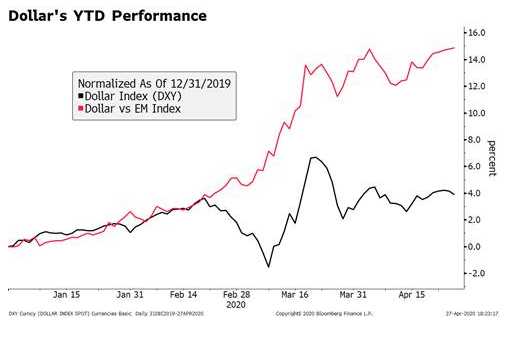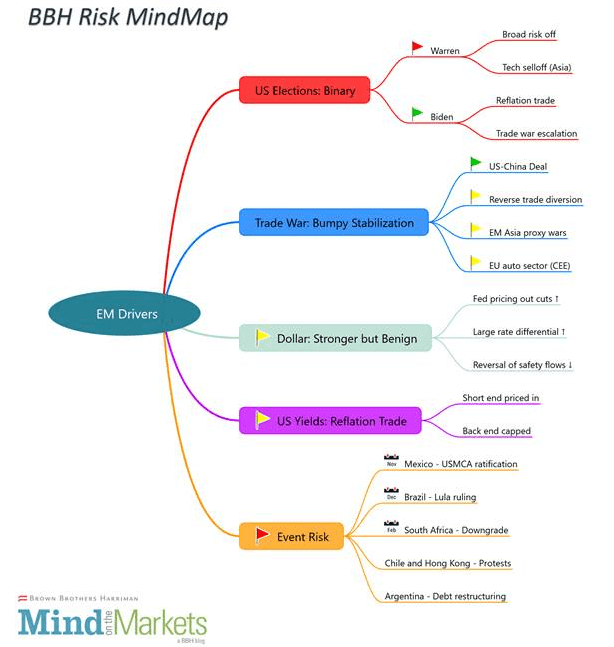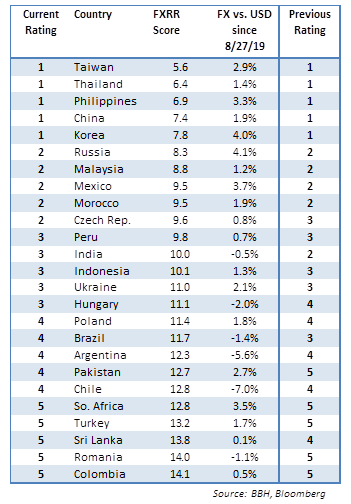Over the past two months we have witnessed historic turmoil followed by unprecedented intervention by policy makers and central banks in supporting the capital markets (and more). In many ways the 2020 COVID-19 pandemic is very different from the 2008 global financial crisis, but for some, certain old concerns still linger. In the face of short selling bans and worries about market liquidity, we discuss below how best to navigate some of the common objections and concerns related to securities lending and how to position your securities lending program in the current environment and beyond. Fees and performance remain top of mind Even more than before, investors in investment funds are increasingly aware of the relationship between fees and performance. Every
Topics:
Win Thin considers the following as important: 5.) Brown Brothers Harriman, 5) Global Macro, Articles, Featured, newsletter, Securities Lending
This could be interesting, too:
Nachrichten Ticker - www.finanzen.ch writes Die Performance der Kryptowährungen in KW 9: Das hat sich bei Bitcoin, Ether & Co. getan
Nachrichten Ticker - www.finanzen.ch writes Wer verbirgt sich hinter der Ethereum-Technologie?
Martin Hartmann writes Eine Analyse nach den Lehren von Milton Friedman
Marc Chandler writes March 2025 Monthly

Over the past two months we have witnessed historic turmoil followed by unprecedented intervention by policy makers and central banks in supporting the capital markets (and more). In many ways the 2020 COVID-19 pandemic is very different from the 2008 global financial crisis, but for some, certain old concerns still linger. In the face of short selling bans and worries about market liquidity, we discuss below how best to navigate some of the common objections and concerns related to securities lending and how to position your securities lending program in the current environment and beyond.
Fees and performance remain top of mind
Even more than before, investors in investment funds are increasingly aware of the relationship between fees and performance. Every asset manager faces greater fiduciary pressure to evaluate techniques that can add revenue to their funds and mitigate the impact of fees on performance, and many are incorporating a well-run securities lending program into their engagement policy. It’s therefore imperative to determine whether securities lending can help improve performance for a fund’s investors.
Historically, the decision whether to lend or not has been a philosophical one. But with the introduction of new tools and the availability of more data than ever before, the decision whether to lend is made easier through rigorous analysis paired with data specific to a fund’s circumstances. BBH has worked with some of the world’s most sophisticated asset managers to assess the value of securities lending using these new methods.
“Lending drives prices down by facilitating shorting”
The most common objection that we have heard from portfolio managers and chief investment officers is that securities lending facilitates short selling, which undermines their investment objectives. By using a sample loan portfolio, we can address this point with a few helpful data points. First, let’s look at the distribution of revenue versus short interest in equities. Our analysis reveals that in many cases, asset managers can earn 75% from stocks where short interest is less than 5% and 99% from stocks where short interest is 15% or less*. In other words, shorting is relatively low in these stocks and the holdings in these stocks would not likely be lent into an environment of high speculative interest or aggressive shorting. At this level of short interest, portfolio managers typically take the view that a program may “lend at will.”
Of course, the relationship between short interest and securities lending revenue will vary from security to security and portfolio to portfolio. However, analysing a portfolio in this way enables an objective discussion about the potential guardrails that limit securities loans to those securities the portfolio manager is comfortable lending. This would result in a more objective and thoughtful approach than what is typically a binary decision of to lend or not to lend.
“Lending will adversely impact my operations”
One of the most common questions regarding securities lending — and one that is highly relevant in today’s volatile environment — is the potential for securities lending to interfere with the investment process, specifically when a stock on loan is sold and a late returning recall causes the sale to fail.
Borrowers are contractually bound to return positions that are recalled from loan when the lender sells those shares. Typically, most securities loan agreements require the lender to inform the agent of its sale of a loaned security prior to the close of business in the relevant market on trade date (T+0). Sale notifications do not require a special process, simply a copy of the security settlement instruction that would usually be sent to the custodian.
Lenders who provide T+0 sale notifications should typically expect their shares to be returned within the settlement cycle of their share sale. If the borrower fails to return the securities in time, then either the stock exchange or the agent lender will “buy-in” the securities necessary to settle the lender’s sale, with any associated costs being borne by the borrower. Agent lenders may offer slightly differing terms and consequential damages coverage.
Beyond contractual remedies, it is important to consider the number of securities on loan. A “volume lender” may have a significant amount of a portfolio’s assets on loan at any time, while a “value lender” may have just a few high value securities out on loan during that same period. Data analysis can highlight how many securities are likely to be on loan at any given time, the markets in which they trade, and hence, their settlement windows.
A well-managed, value-based program with a limited number of securities on loan at any time should not typically generate settlement issues for the investment process. The level of automation and operational sophistication of agent lenders and custodians result in a highly efficient operational service.
Bottom line
For those asset managers who have decided not to engage in securities lending, the pressure on fees means there’s now more reason than ever to review that decision. In the past, this question might have been resolved at a philosophical level. Today, however, there are far more rigorous and precise methods available to establish the case for or against participating in a securities lending program. More importantly, once a review has been conducted, the asset manager will have fulfilled its responsibility to thoroughly assess the benefit to its fund investors.
To continue this conversation please contact your Securities Lending RM directly.
*BBH analysis 2020
Tags: Articles,Featured,newsletter,Securities Lending







